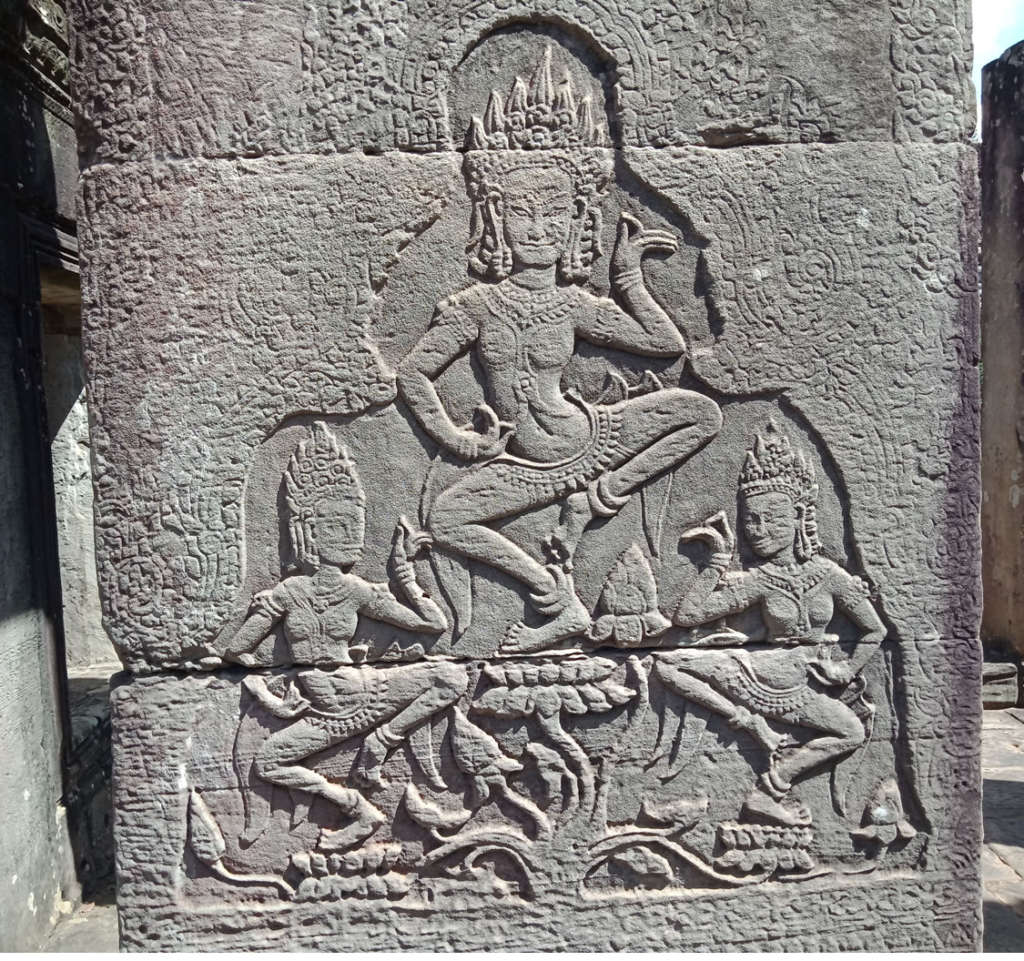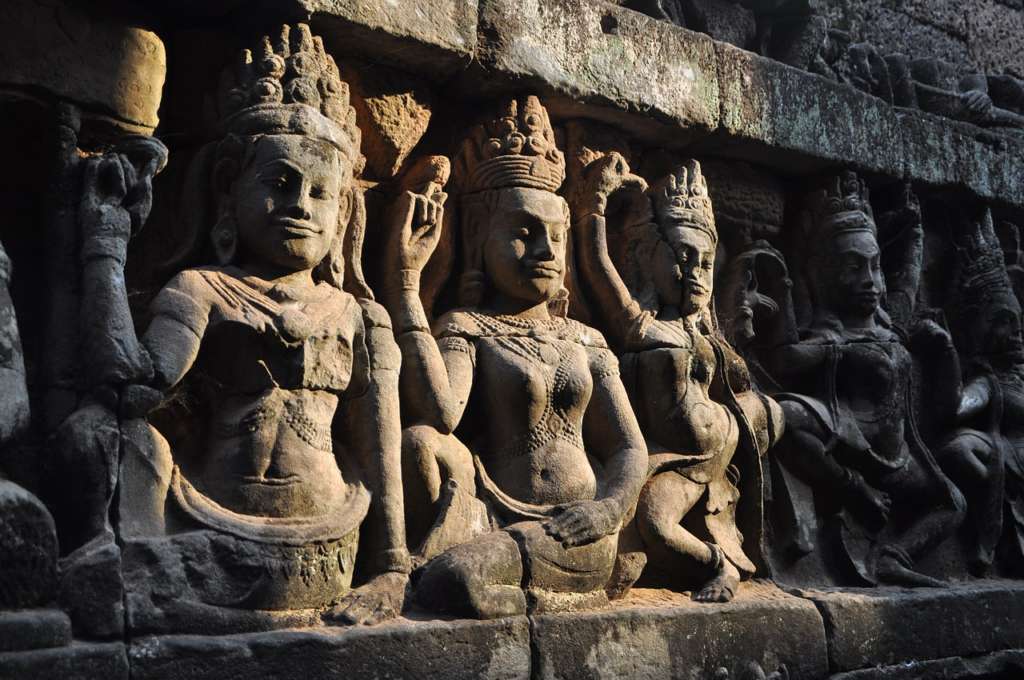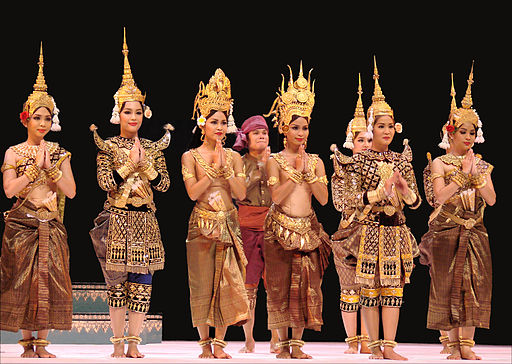The Mekong Diaries – Apsara Dance

Tuesday 10th July 2018 – Day 4 on ms Jahan’s “Classical Civilisations” river cruise
On the evening that we were moored overnight in Phnom Penh, we were fortunate to have some extremely talented dancers and musicians come onboard the ms Jahan ship and treat us to a range of local dances and performances.
In Hindu culture, the ‘Apsaras” are the female spirits of the clouds and waters.
The Apsara stories are entwined in the ancient history of Cambodia. Angkor Wat, the largest Angkorian temple (built AD 1116–1150), features both apsaras and devata, however the devata type are the most numerous with more than 1,796 in the present research inventory. Angkor Wat architects employed small apsara images (30–40 cm as seen below) as decorative motifs on pillars and walls. Khmer female figures that are dancing or are poised to dance are considered apsaras; female figures, depicted individually or in groups, who are standing still and facing forward in the manner of temple guardians or custodians are called devatas (female Hindu gods)

English translations of the word apsara include nymph, fairy, celestial nymph, and celestial maiden.

In Indian mythology, apsaras are beautiful, supernatural female beings. They are youthful and elegant, and superb in the art of dancing. They are often wives of the Gandharvas, the court musicians of Indra. They dance to the music made by the Gandharvas, usually in the palaces of the gods, entertain and sometimes seduce gods and men. As ethereal beings who inhabit the skies, and are often depicted taking flight, or at service of a god, they may be compared to angels. (1)

The Cambodian Apsara dance was created by the Royal Ballet of Cambodia in the mid-20th century under the patronage of Queen Sisowath Kossamak of Cambodia. The role of the apsara is played by a woman, wearing tight-fitting traditional dress with gilded jewelries and headress modelled after Angkor bas-reliefs, whose graceful, sinuous gestures are codified to narrate classical myths or religious stories.(1)


